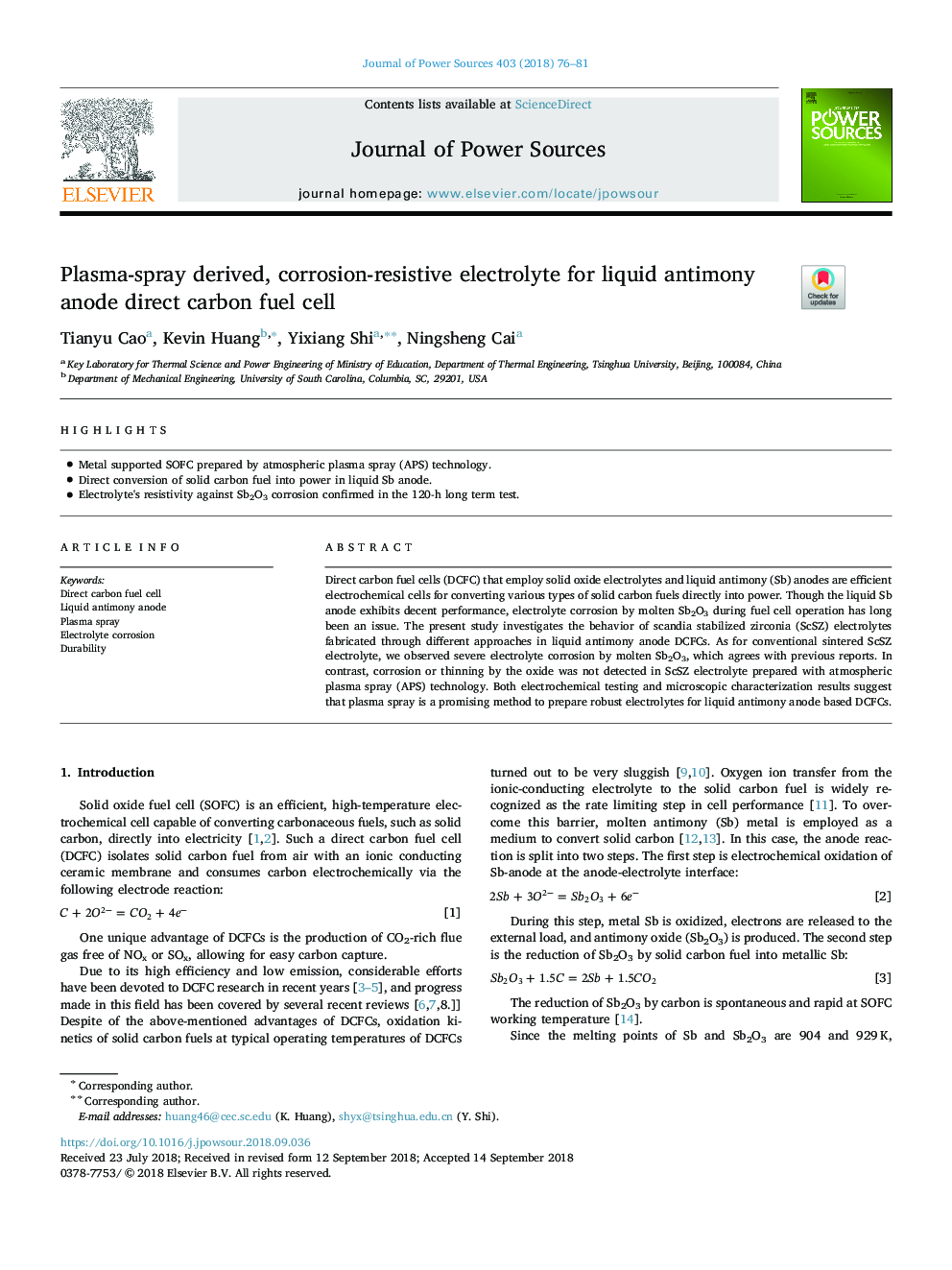| Article ID | Journal | Published Year | Pages | File Type |
|---|---|---|---|---|
| 11020210 | Journal of Power Sources | 2018 | 6 Pages |
Abstract
Direct carbon fuel cells (DCFC) that employ solid oxide electrolytes and liquid antimony (Sb) anodes are efficient electrochemical cells for converting various types of solid carbon fuels directly into power. Though the liquid Sb anode exhibits decent performance, electrolyte corrosion by molten Sb2O3 during fuel cell operation has long been an issue. The present study investigates the behavior of scandia stabilized zirconia (ScSZ) electrolytes fabricated through different approaches in liquid antimony anode DCFCs. As for conventional sintered ScSZ electrolyte, we observed severe electrolyte corrosion by molten Sb2O3, which agrees with previous reports. In contrast, corrosion or thinning by the oxide was not detected in ScSZ electrolyte prepared with atmospheric plasma spray (APS) technology. Both electrochemical testing and microscopic characterization results suggest that plasma spray is a promising method to prepare robust electrolytes for liquid antimony anode based DCFCs.
Related Topics
Physical Sciences and Engineering
Chemistry
Electrochemistry
Authors
Tianyu Cao, Kevin Huang, Yixiang Shi, Ningsheng Cai,
